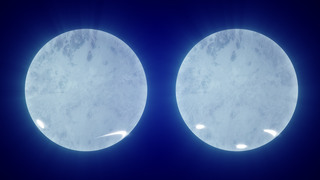NASA’s NICER Tests Matter’s Limits
The finding is based on NICER’s observations of PSR J0740+6620 (J0740 for short), the most massive known neutron star, which lies over 3,600 light-years away in the northern constellation Camelopardalis. Previous observations place the neutron star’s mass at about 2.1 times the Sun’s.
Scientists think neutron stars are layered. At the surface, a thin atmosphere of hydrogen or helium atoms rests on a solid crust of heavier atoms. In the crust, the rapid increase in pressure strips electrons from atomic nuclei. Deeper down, in the outer core, the nuclei break down into neutrons and protons. The immense pressure crushes together protons and electrons to form a sea of mostly neutrons that are eventually packed together at up to twice the density of an atomic nucleus.
But what form does matter take in the inner core? Is it neutrons all the way down, or do the neutrons break into their own component parts, called quarks?
In traditional models of a typical neutron star, one with about 1.4 times the Sun’s mass, physicists expect the inner core to be mostly filled with neutrons. The lower density ensures that neutrons remain far enough apart to stay intact, and this inner stiffness results in a larger star.
In more massive neutron stars like J0740, the inner core’s density is much higher, crushing the neutrons closer together. It’s unclear whether neutrons can remain intact under these conditions or if they instead break down into their constituent parts, called quarks. Theorists suspect they shatter under the pressure, but many questions about the details remain. To get answers, scientists need a precise size measurement for a massive neutron star. A smaller star would favor scenarios where quarks roam freely at the innermost depths because the tinier particles can be packed more closely. A larger star would suggest the presence of more complex forms of matter.
Two teams used different approaches to model J0740’s size, getting results of around 15.4 miles (24.8 kilometers) and 17 miles (27.4 kilometers) across. The two results overlap significantly within their uncertainties, ranging from 14.2 to 17 miles (22.8 to 27.4 kilometers) and 15.2 to 20.2 miles (24.4 to 32.6 kilometers), respectively.
The J0740 result, combined with a previous NICER measurement of pulsar J0030+0451 and other multimessenger observations disfavor more squeezable models of neutron stars, including versions where the interior is a sea of quarks. J0740's size and mass also pose problems for some less squeezable models containing only neutrons and protons.
Recent theoretical models propose some alternatives, such as inner cores containing a mix of neutrons, protons, and exotic matter made of quarks or new combinations of quarks. But all possibilities will need to be reevaluated in the context of this new information from NICER.
Related
Credits
Chris Smith (USRA): Producer
Jeanette Kazmierczak (University of Maryland College Park): Lead Science Writer
Chris Smith (USRA): Lead Animator
Barb Mattson (University of Maryland College Park): Narrator
Zaven Arzoumanian (NASA/GSFC): Science Advisor
Sharon Morsink (University of Alberta): Visualizer
Scott Wiessinger (USRA): Animator
Scott Wiessinger (USRA): Editor
NASA's Goddard Space Flight Center. However, individual items should be credited as indicated above.
https://svs.gsfc.nasa.gov/13832
Mission:
Neutron star Interior Composition Explorer (NICER)
This item is part of these series:
Narrated Movies
Astrophysics Visualizations
Astrophysics Features
Keywords:
SVS >> Neutron Star
SVS >> X-ray
SVS >> Astrophysics
SVS >> Pulsar
SVS >> Space
SVS >> Star
NASA Science >> Universe
SVS >> NICER













